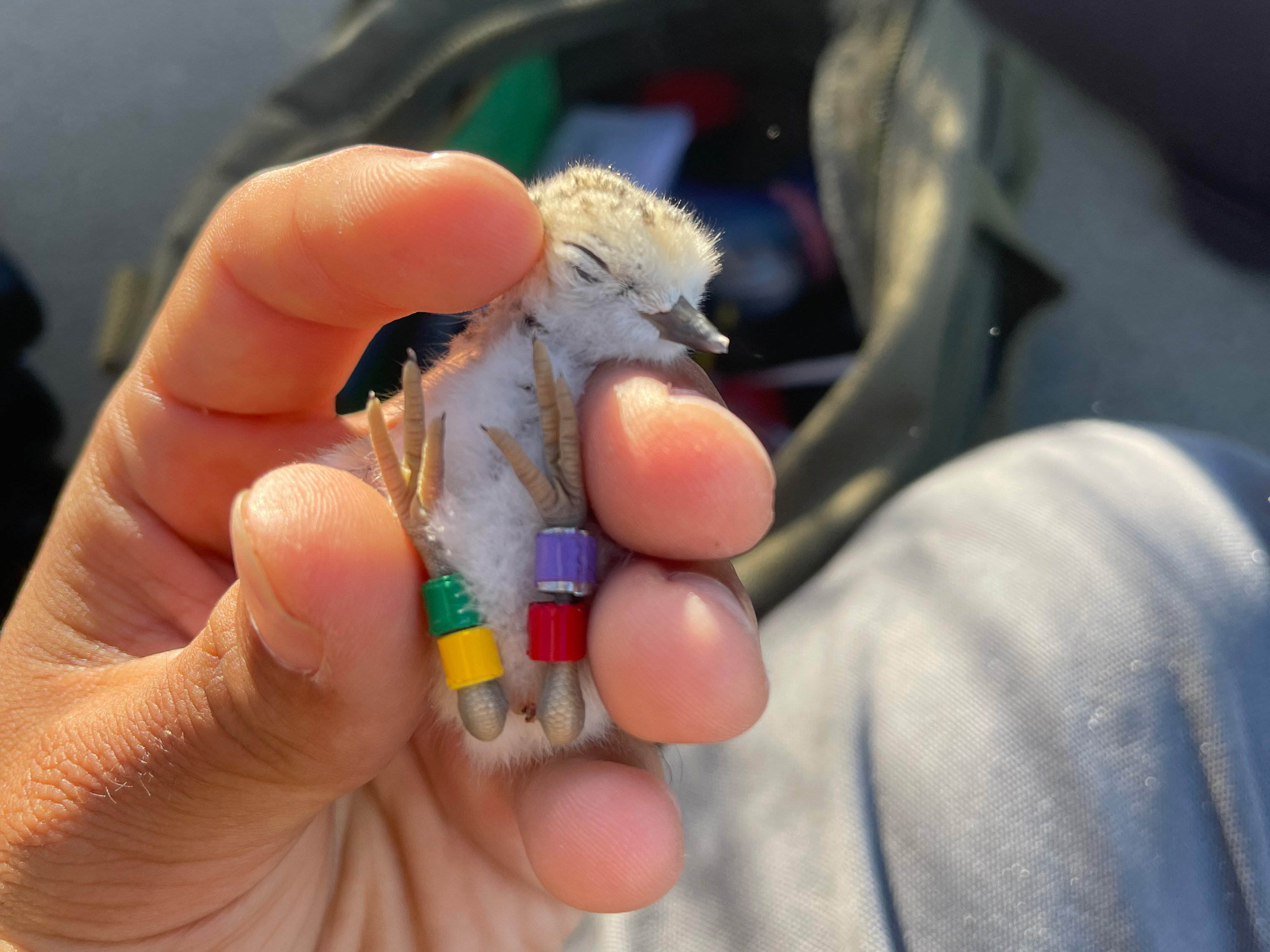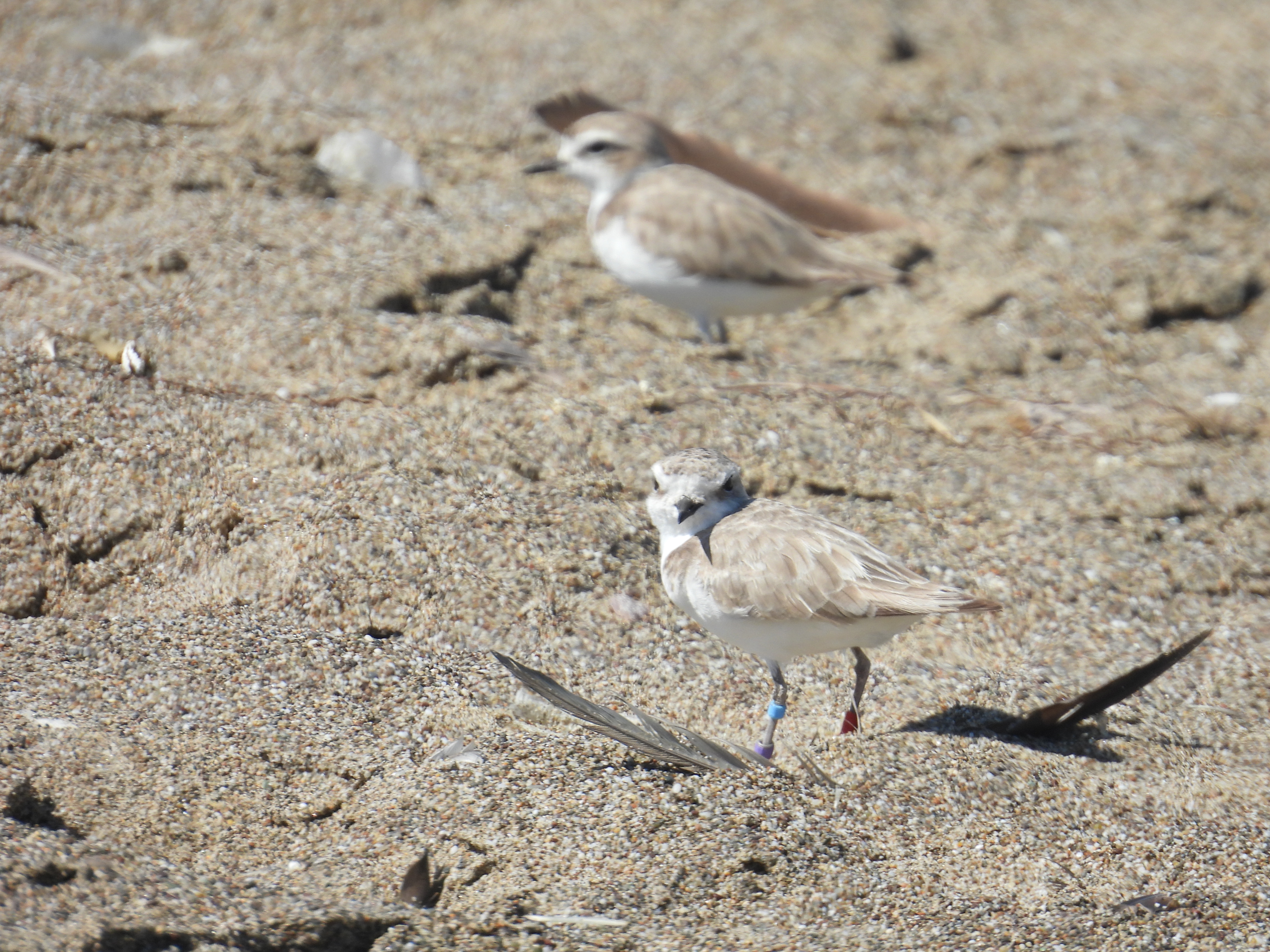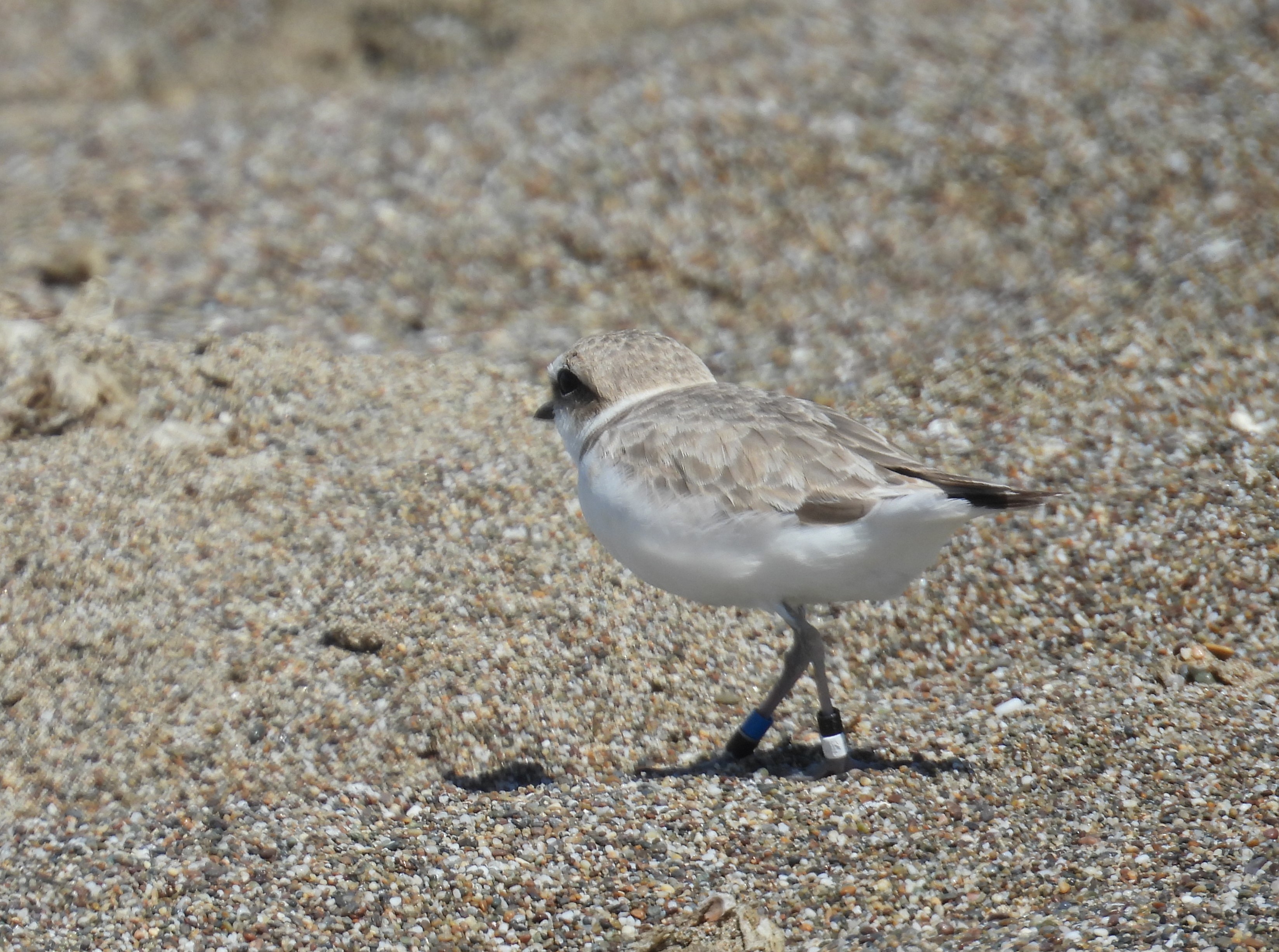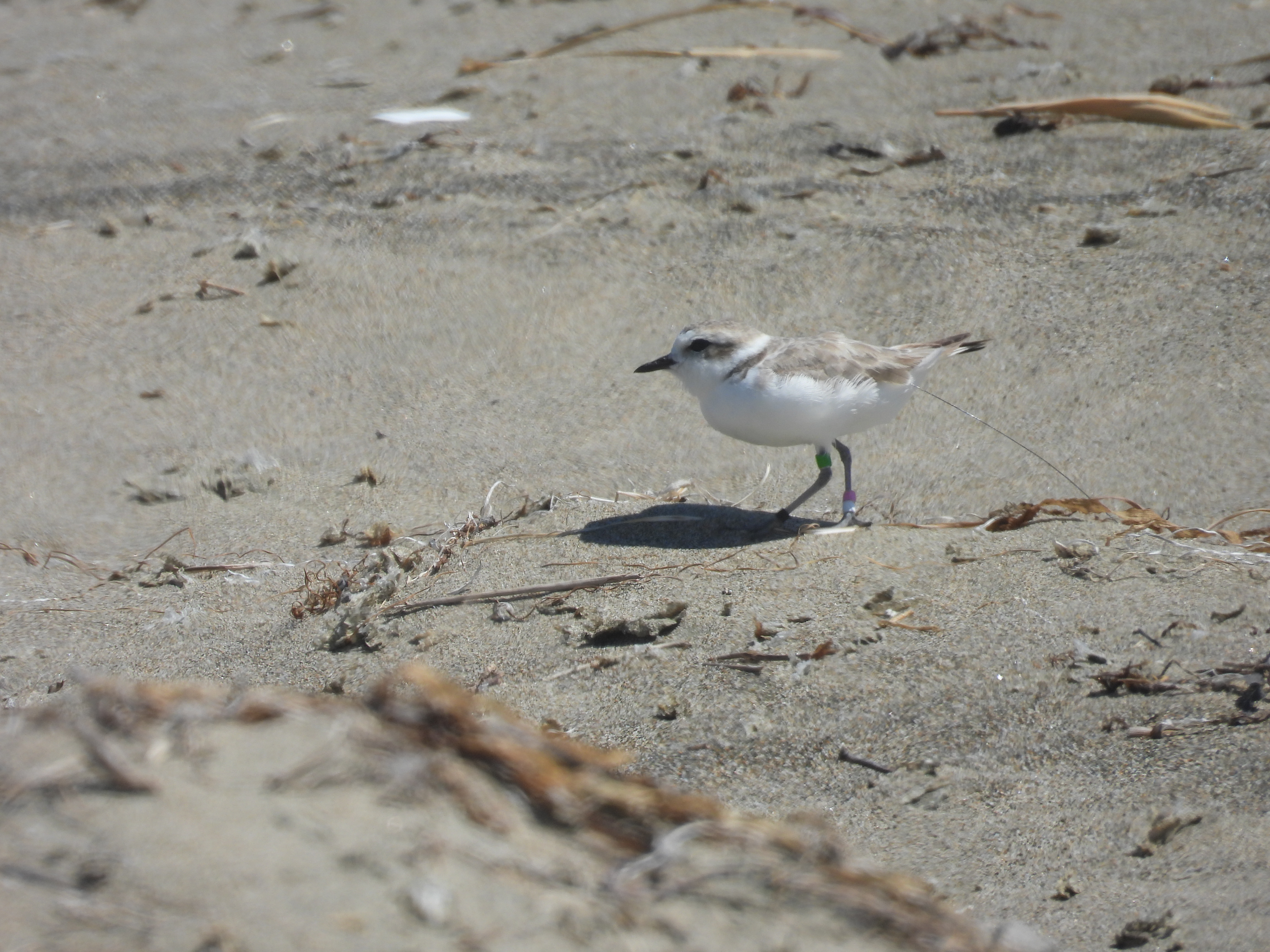Overview
Hello Ploverites!
On Monday, we banded what will very likely be our last hatch of the season. The wind was starting to blow quite hard as we put the snowy plover chicks back in their nest bowl, so we were a little concerned how they would fare through the day. After our survey earlier today, it seems like they made it through the higher winds just fine, as PRNSA Wildlife Biological Technician Aiko Goldston found all three chicks foraging with their dad on Limantour Beach! We're still seeing large flocks beginning to form on Limantour, as well as Abbotts Lagoon, so while some birds are still working on getting their chicks to fledge, others are very much on the move and starting to potentially settle in for the winter (sounds crazy to say at the beginning of August). We found at least three birds in a flock at Abbotts that recently flew in from the Oregon coast, as well as one bird that may have come in from the Great Salt Lake area in Utah, which would be a first for the area in quite some time.
We were expecting one of our broods to fledge this week and are quite confident at least one chick did fledge. However, the male for these chicks is still taking his fatherly duties very seriously and hiding his what would now be juveniles somewhere in the dunes near Abbotts Lagoon, so we are not yet able to add more fledges to our count. As of today, those young birds would be 30 days old. It's usually between 30 and 35 days old when we see young birds become independent from their parent and siblings, so hopefully sometime in the next week or so they’ll decide to show themselves to the world.
As always, if you have any questions, please feel free to contact Parker Kaye via email.
Productivity Stats
- 55 total nests this season
- 0 active nests
- 26 hatched
- 29 failed nests
- 19 maximum chicks on PRNS beaches
- 9 chicks fledged
- 2 PRNS juveniles released from IBR
Photos
 A snowy plover chick banded red over violet on the left leg and yellow over green on the right leg (rv:yg). The left leg combo (rv) is one of four left leg color combinations used to denote that this bird is from Point Reyes National Seashore. This is one of the last three chicks banded in the seashore this year at Limantour Beach on August 4, 2025.
A snowy plover chick banded red over violet on the left leg and yellow over green on the right leg (rv:yg). The left leg combo (rv) is one of four left leg color combinations used to denote that this bird is from Point Reyes National Seashore. This is one of the last three chicks banded in the seashore this year at Limantour Beach on August 4, 2025.
Photo credit: Parker Kaye / PRNSA
 A female snowy plover banded aqua over violet on the left leg and red over red on the right leg (av:rr) at Abbotts Lagoon, with another unbanded snowy plover in the background. av:rr lost a nest in the seashore during May windstorms and spent the rest of the summer up in Oregon before returning this week.
A female snowy plover banded aqua over violet on the left leg and red over red on the right leg (av:rr) at Abbotts Lagoon, with another unbanded snowy plover in the background. av:rr lost a nest in the seashore during May windstorms and spent the rest of the summer up in Oregon before returning this week.
Photo credit: Parker Kaye / PRNSA
 A snowy plover with black over white bands on the left leg and blue over black on the right leg (kw:bk) at Abbotts Lagoon. This left leg combination of black over white is used on snowy plovers at the Great Salt Lake in Utah. We are waiting to hear back about this bird's history.
A snowy plover with black over white bands on the left leg and blue over black on the right leg (kw:bk) at Abbotts Lagoon. This left leg combination of black over white is used on snowy plovers at the Great Salt Lake in Utah. We are waiting to hear back about this bird's history.
Photo credit: Parker Kaye / PRNSA
 A female snowy plover banded green over black on the left leg, pink over white on the right leg (Gk:pw) on Limantour Beach. Because the green band is placed above the leg joint, it is denoted with an upper case ‘G’ in the shorthand expression of the band combination. If you look closely, there is an antenna sticking out the backside of the bird. This is a Motus tag, which is small radio transmitter attached to the bird to track movements across both small and large areas. This bird was banded and tagged at Eden Landing Ecological Reserve in Hayward.
A female snowy plover banded green over black on the left leg, pink over white on the right leg (Gk:pw) on Limantour Beach. Because the green band is placed above the leg joint, it is denoted with an upper case ‘G’ in the shorthand expression of the band combination. If you look closely, there is an antenna sticking out the backside of the bird. This is a Motus tag, which is small radio transmitter attached to the bird to track movements across both small and large areas. This bird was banded and tagged at Eden Landing Ecological Reserve in Hayward.
Photo credit: Parker Kaye / PRNSA
The National Park Service shall not be held liable for improper or incorrect use of the data described and/or contained herein. These data and related graphics (if available) are not legal documents and are not intended to be used as such. The information contained in these data is dynamic and may change over time. The National Park Service gives no warranty, expressed or implied, as to the accuracy, reliability, or completeness of these data. For more information: https://www.nps.gov/disclaimer.htm
